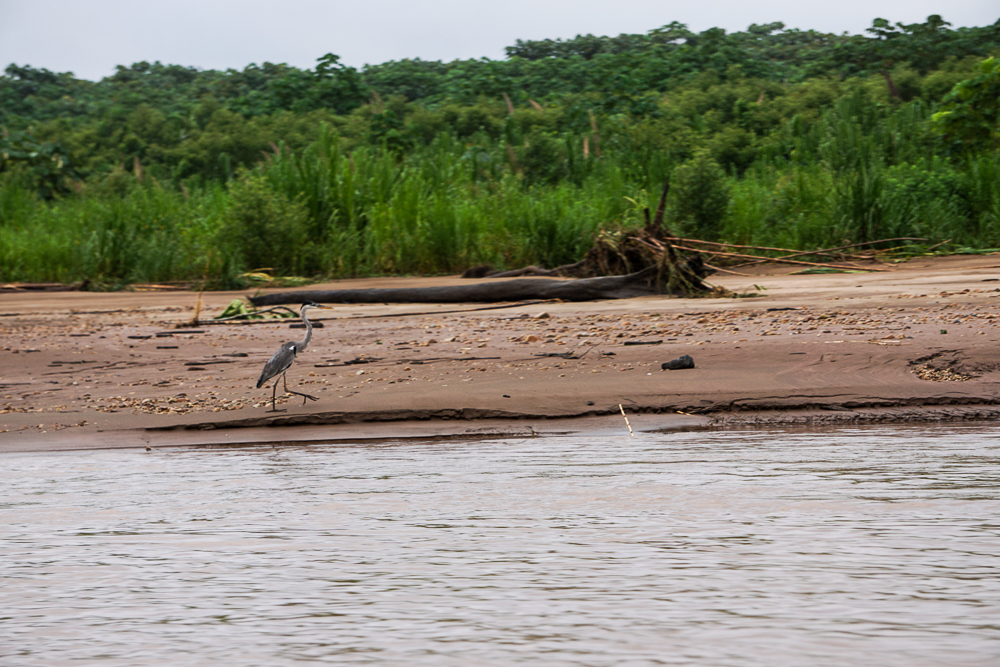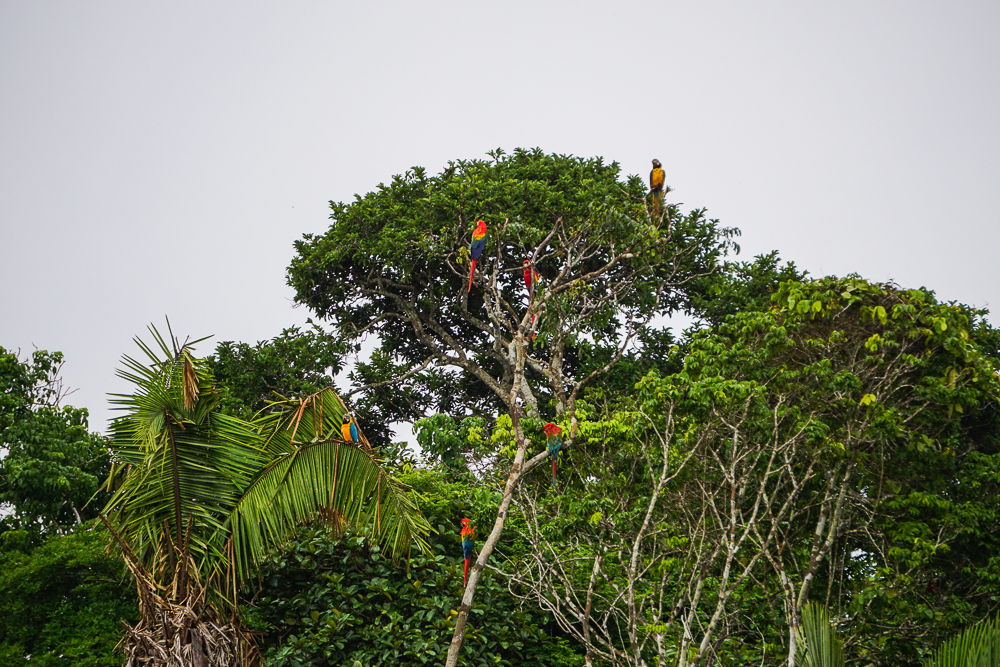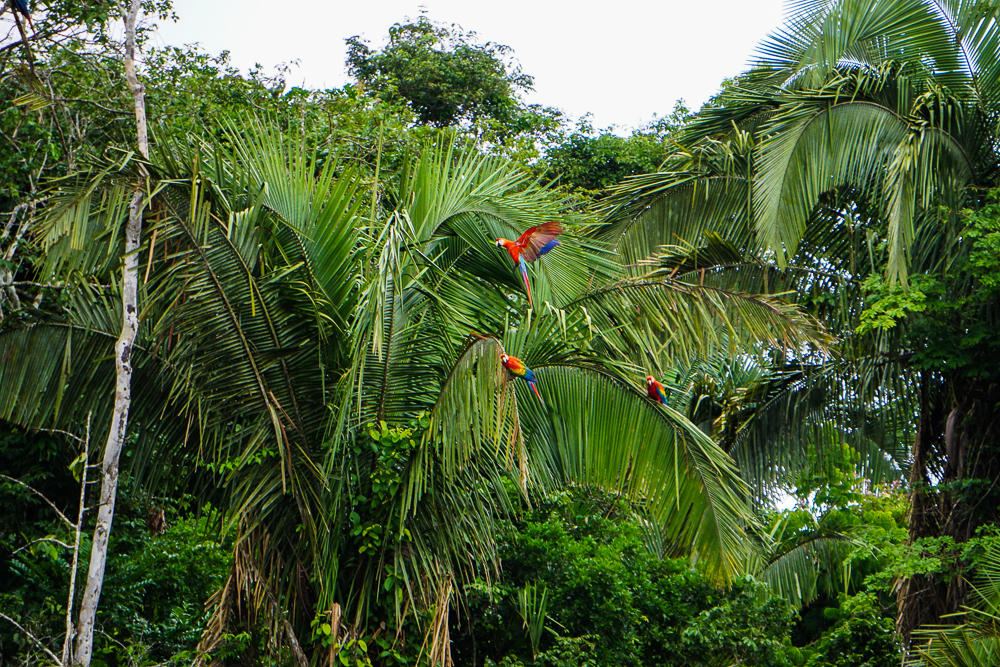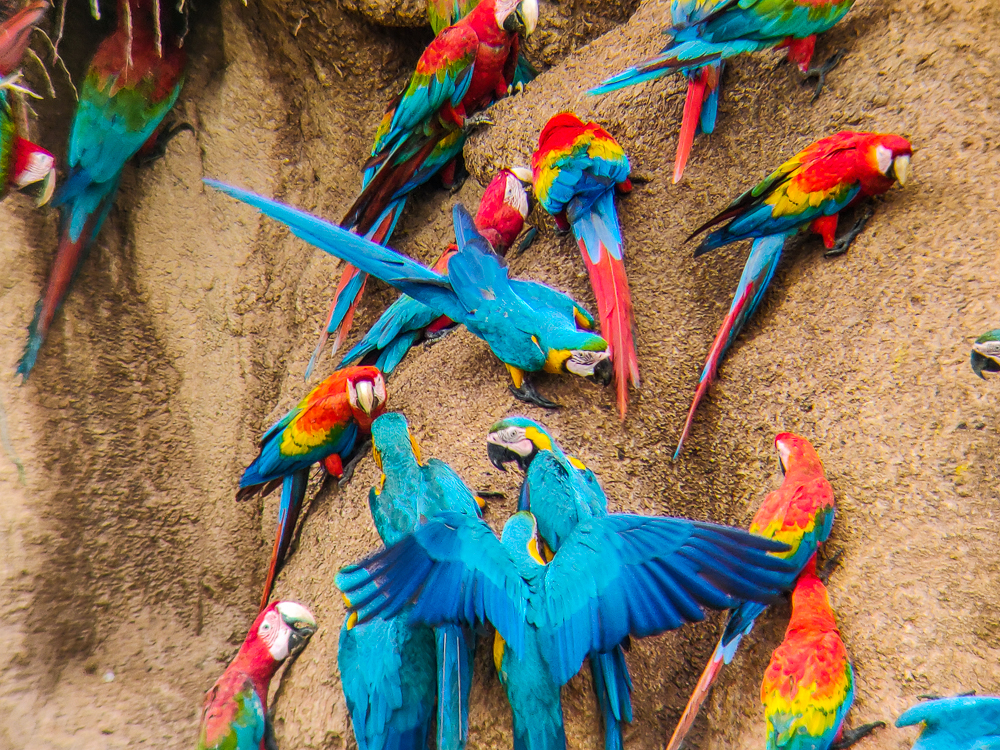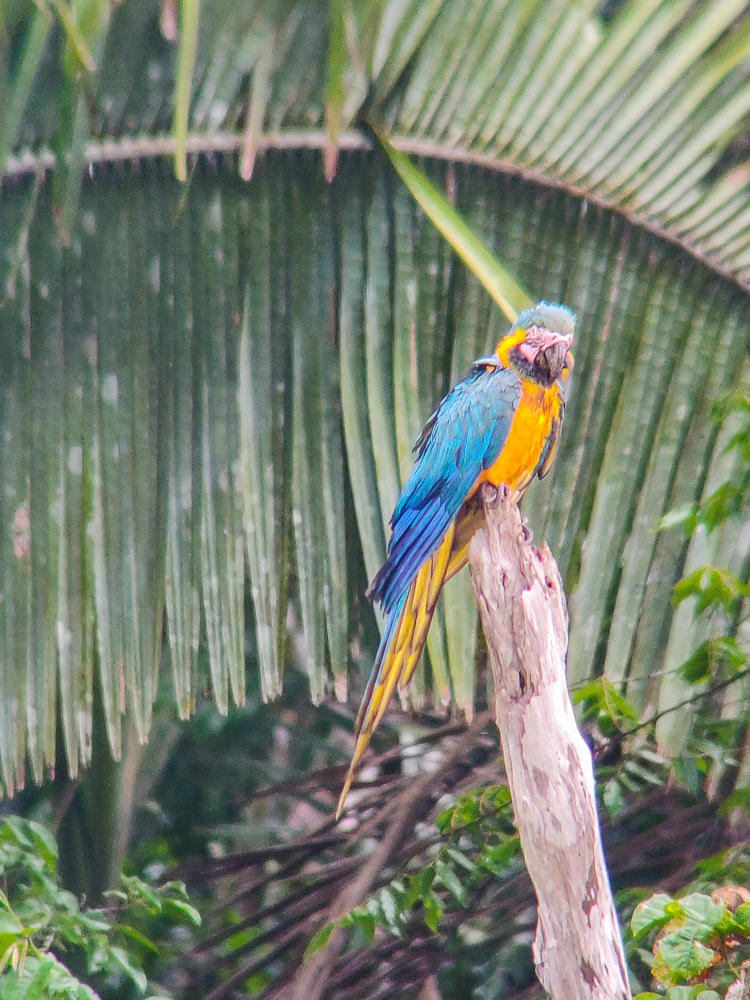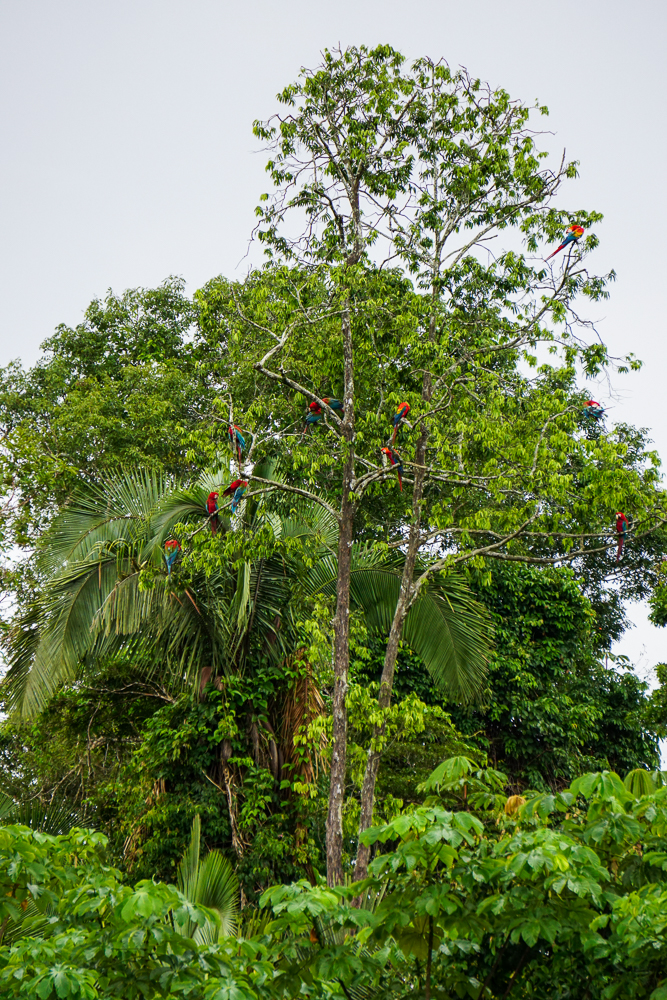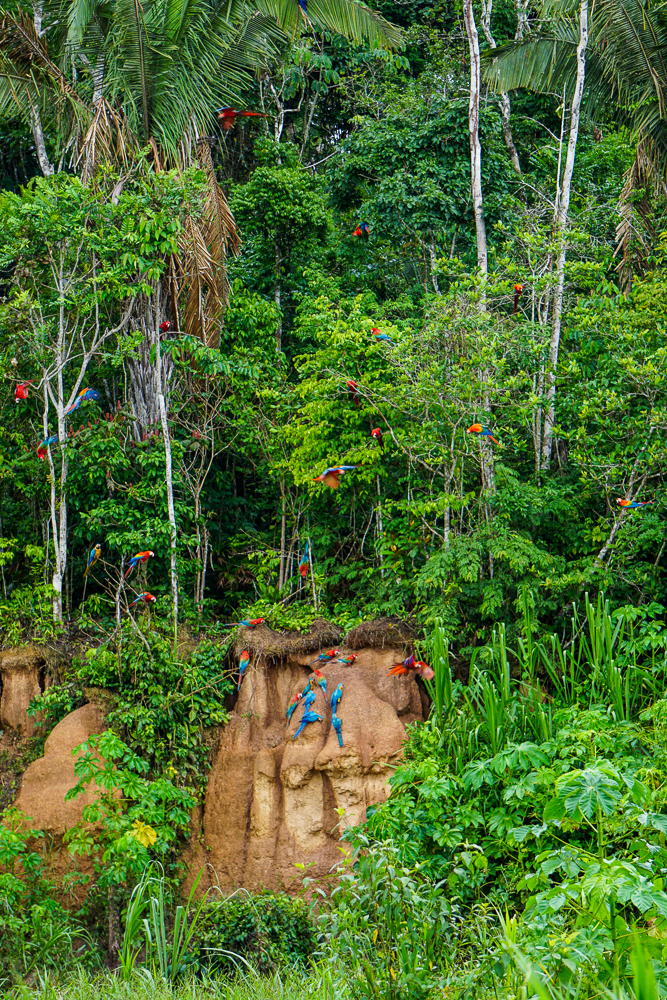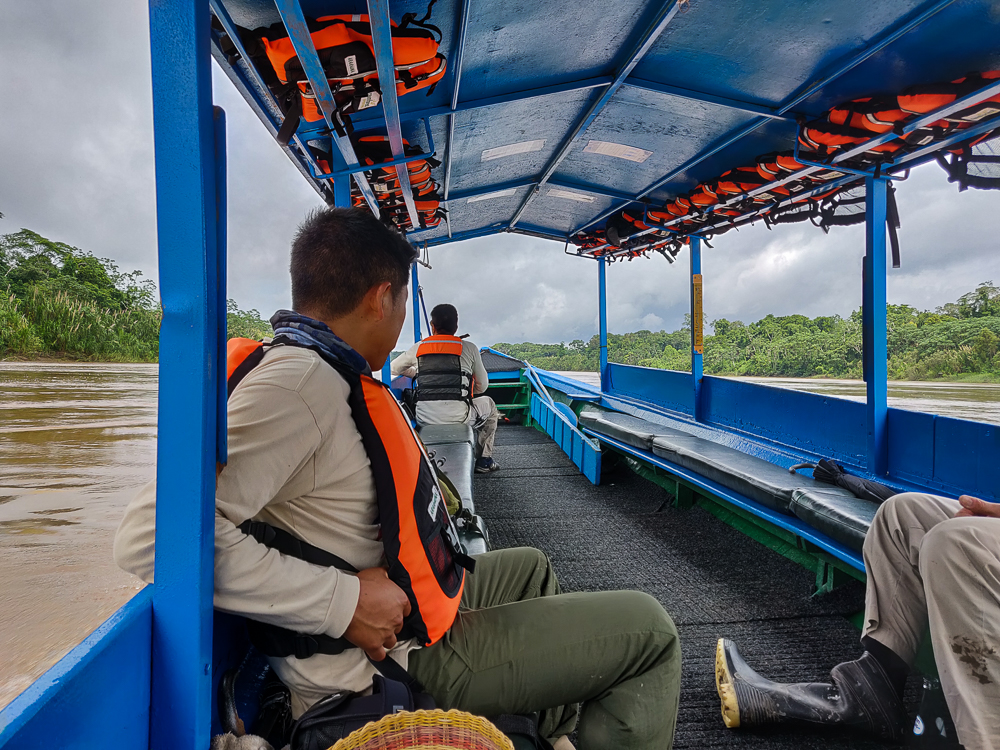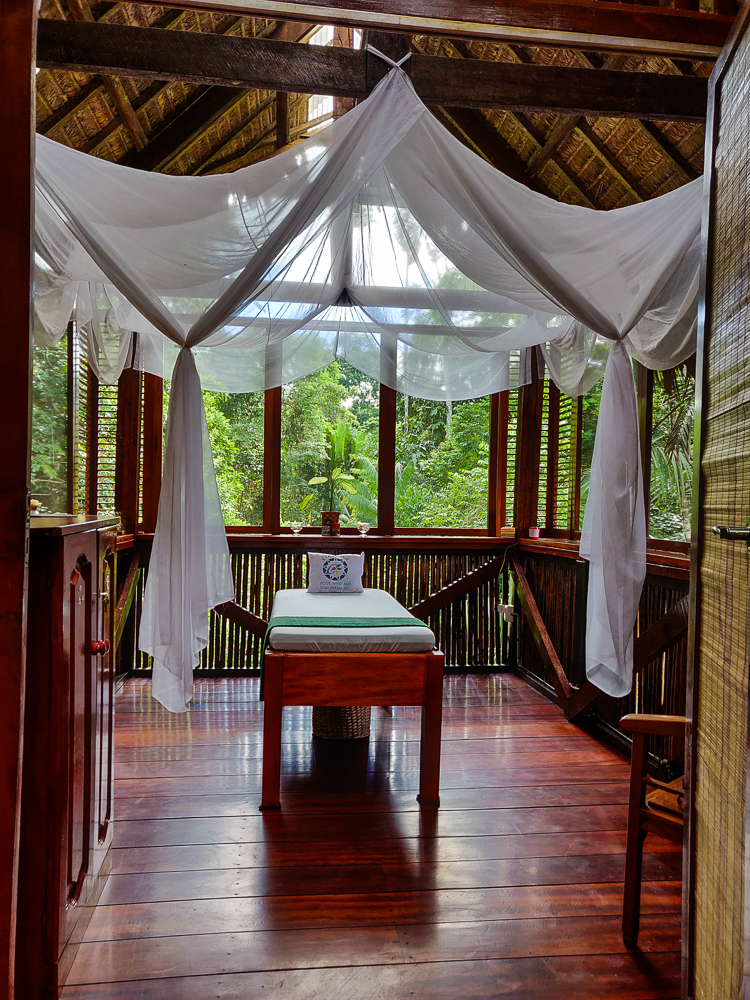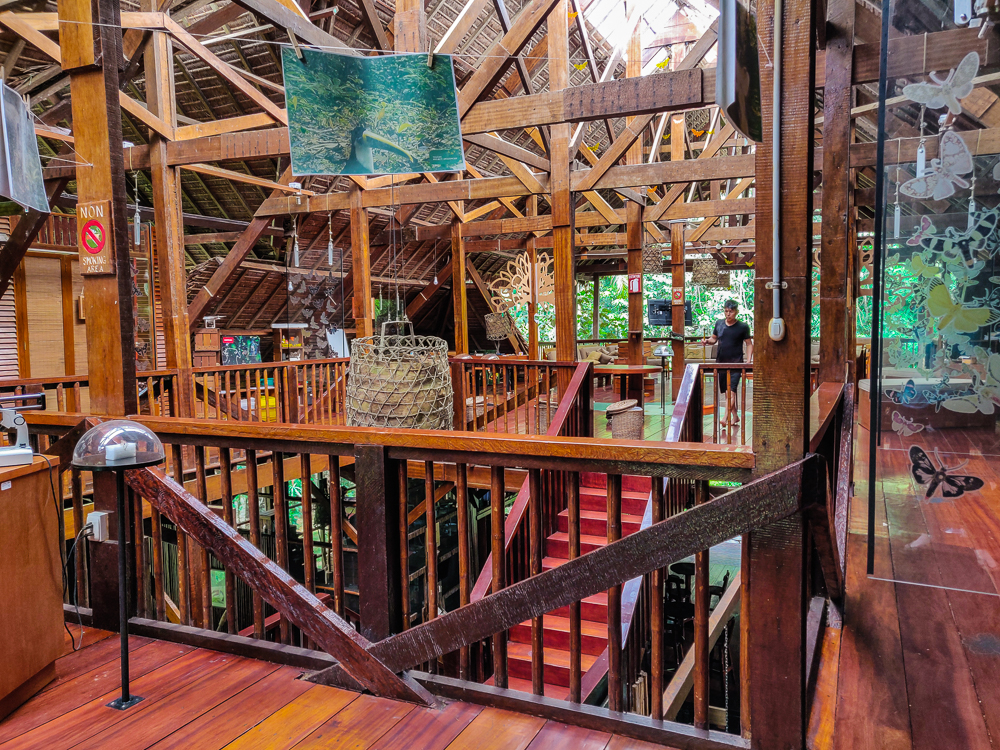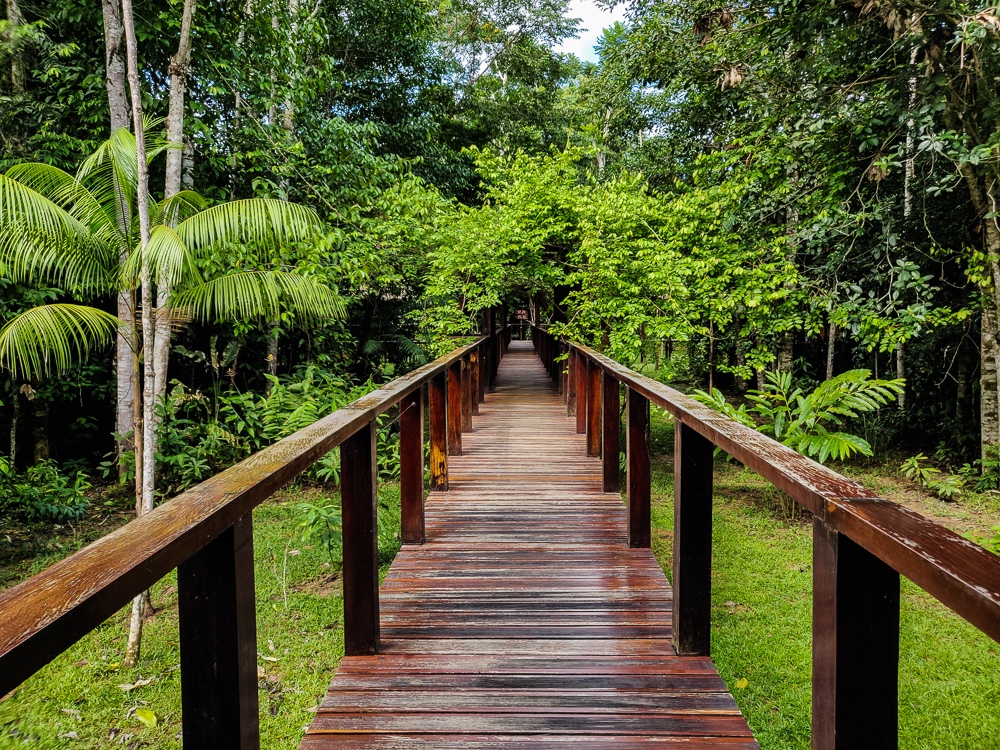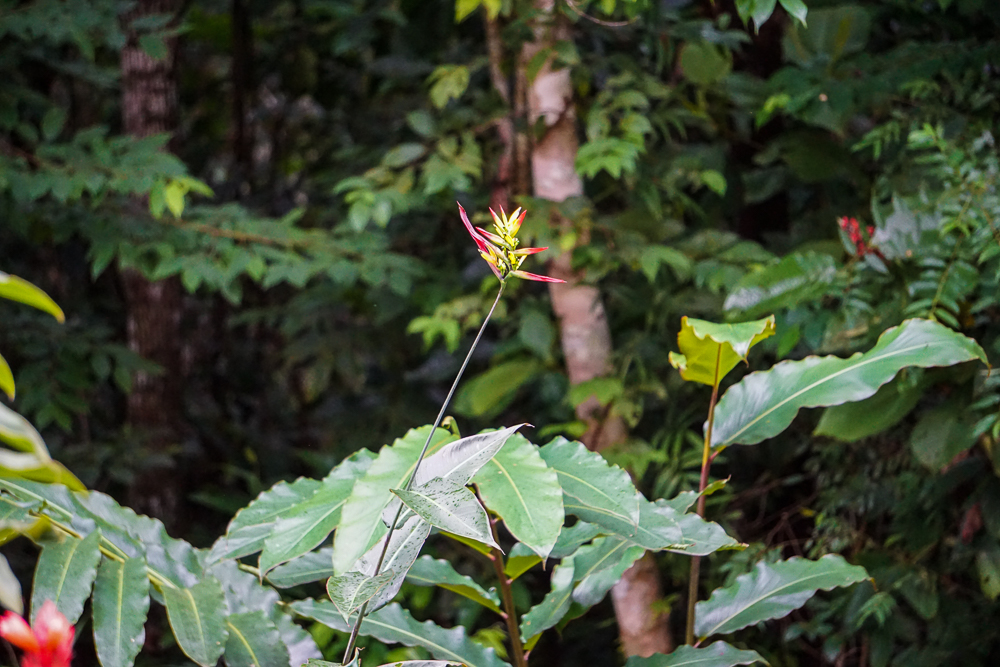
We got to “sleep in” on our second morning in the rainforest. Breakfast was at 7AM, and we left directly after for our morning excursion. The weather looked mildly threatening, but since it wasn’t raining, we decided to chance it and visit a lake about an hour’s walk away, Lake Condenado.
Despite our optimism that the rain would hold off until we got back, well… that didn’t happen. We were walking for maybe half an hour before it started sounding like the rains were coming. Have you ever been in a forest as a storm was approaching? It’s a little intimidating! You hear the leaves rustling and the rain pounding down in the distance, and it sounds like it will be on top of you in a second. I always feel this tension in the air, like a foreboding, and a voice in the back of my head is yelling, “Run! It’s coming!” It’s pointless, of course. There’s no outrunning a storm like that (at least not at my speed). So, we did the next best thing and took advantage of the warning by donning our rain gear. We’d all brought umbrellas, too, which ended up being the best idea of the day.




A couple of minutes later, the rain reached us, and from then on, it was pouring. POURING. I kept hoping it would let up a little… nope. We got the full rainforest experience. It was still going strong when we reached the lake.
I was surprised to hear that there are lakes in the rainforest. Maybe it’s just me, but “rainforest” puts a picture of rivers in my head rather than lakes. Well, the reason for the lakes is actually the rivers! Remember that picture of the winding river that I took from the plane? Here it is again, in case you don’t:
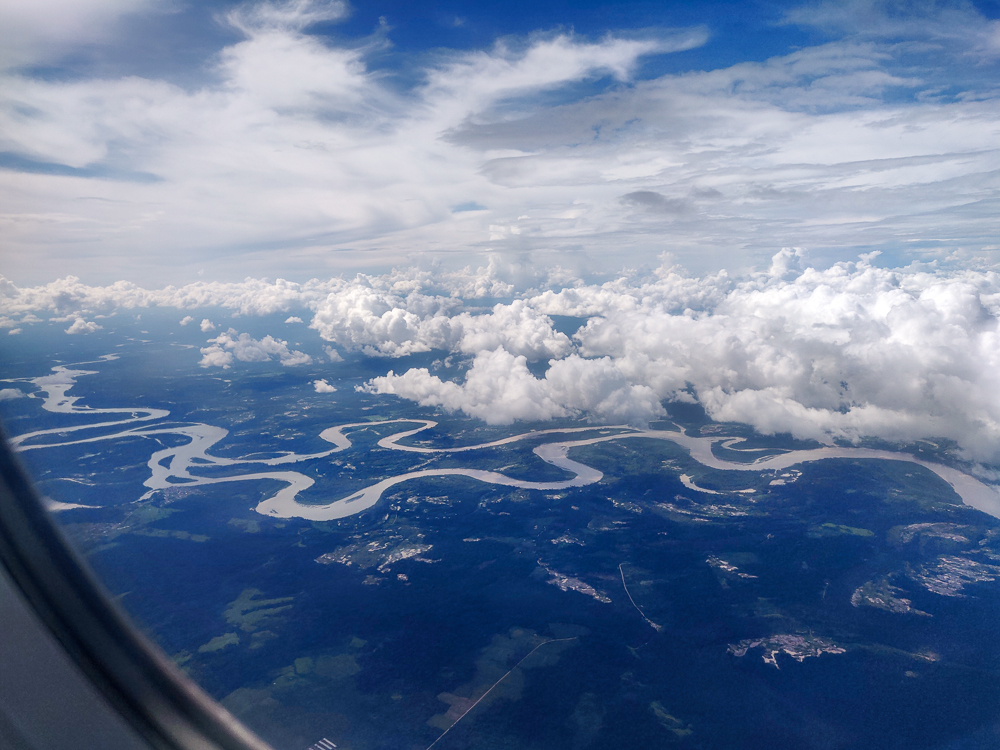
As the river turns, there are two things happening: the outside of the bend erodes and inside builds up deposits of silt. Eventually, enough erosion happens between two bends that a shortcut is formed, and silt keeps building up until the loop of the river between the two bends gets cut off. Water stops flowing through this original route, turning it into a lake, called an oxbow lake. These lakes create a completely new habitat within the rainforest. Enjoy a very helpful visual aid below:

We loaded into a canoe at the lake, and Juvenal paddled us across while Dad bailed out the boat. And it kept on raining.



We unfortunately didn’t get the full lake experience because of the rain. Normally, these lakes are great places to see wildlife. Endangered giant river otters, the longest of all weasels (they grow up to 5’ long!), take advantage of the more sheltered habitat to raise their young. Caiman, including the 15-foot-long Black Caiman, and anaconda sightings are possible if you’re very lucky (or unlucky, depending on your viewpoint). Piranhas are guaranteed to be in attendance, and Juvenal brought bread to lure them up to the surface. Who knew that piranhas were such carb-lovers? We couldn’t see them, but we could see the pieces of bread bobbing up and down as they were eaten from below. Apparently, piranhas will jump out of the water when the weather is nice, but they don’t do that in the rain. Why not? Who knows? It’s not like they’re worried about getting wet!
(Here’s a terrible piranha video I took where I apparently got distracted partway through and let the bread drift out of frame even though it’s only 20 seconds long. My videography skills could use some work still…)
Speaking of animals getting wet in the rain… We saw some birds around, sitting in the trees around the lake. They looked just about how I felt: soggy and a little miserable. I hadn’t really thought before about the animals having to deal with the rain. In my mind, they all have nice, dry jungle houses to go to. But those birds were definitely not nice and dry. Maybe that doesn’t actually bother them at all, but they sure didn’t look very happy. As they say, misery loves company, and seeing them made me feel slightly better… and also thankful for my umbrella and waterproof clothes. At least I was dry!
Across the lake, we got out of the canoe and to visit a couple of trees. The best thing about trees is that there’s a 100% chance of them being there where you left them (except maybe, theoretically, in the case of the walking palm tree…), unlike any time you go to look for wildlife. The first was a huge tree with some serious buttress roots. I don’t remember what kind of tree it was, but maybe a ceiba (kapok tree in English)? That’s my unprofessional guess, based on other ceibas I’ve seen. We’ll just go with that unless any of you know any better, then feel free to burst my arborist ego.
We asked how old it was, and Juvenal said that there’s really no way to know for sure. Even if the tree was cut down, there are no rings to indicate its age! Each ring marks the beginning of a “growing season”, and in places with cold winters and hot summers, the result is one ring each year. In the tropics, the weather is relatively stable throughout the year which means that the trees have nothing telling them to stop growing. Their growing season is ongoing. So, we have to be content with the mystery.
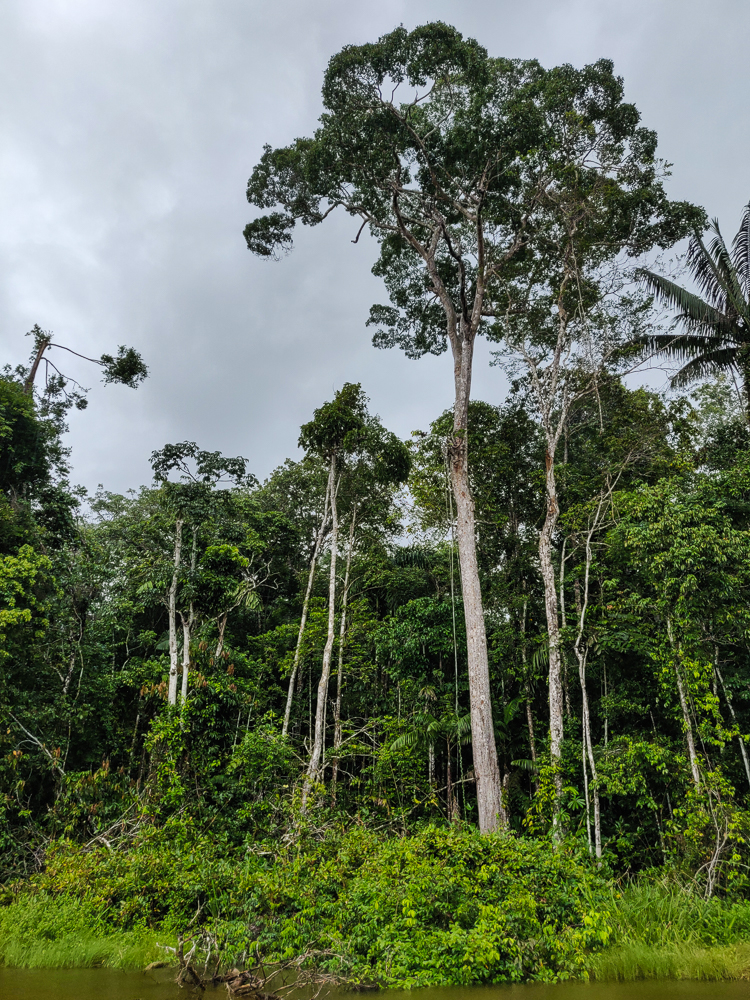




Note: Despite how it may look in this picture, I’m not pregnant and also do not have a new beer belly (ditto for Dad). I put my backpack on my front/inside my rain jacket to protect my stuff because it’s much easier to keep a backpack dry with an umbrella when it’s in front of you! Otherwise, the umbrella runoff often falls right onto your bag.
The other “tree” was a parasite. You can see these growing all over the forest in varying levels of development. It’s quite the long process… the parasite tree grows around an existing tree. It looks like interconnected vines wrapping around the trunk, and eventually grows to about the height of the host tree. The parasite ultimately chokes out the host tree and kills it. Over time, the host decays and leaves the parasite standing on its own with a cavity in the middle where the original tree trunk used to be.
So, this particular parasite tree was at the point where the original tree was gone, and since it was so big, we could go inside! How weird. It was hard to take pictures with the rain and such, but I did my very best (and that will have to be enough).





The ride back across the lake was about the same as the way there. Juvenal paddled. Dad bailed. Mom and I sat and tried to stay dry (important work we were doing). From there, we headed back to the lodge, and the rain started to slow when we were nearly there. I was ready to turn around and give the lake another try! Thanks for nothing, rainforest weather! Though, I do have to point out that we were incredibly lucky/foresighted when we decided to visit the macaws the previous day and not risk hoping for better weather the next morning. That would have been a huge disappointment! The trees are there rain or shine, but the macaws aren’t.


We had some good relaxation time for the rest of the day. We made a quick trip across the river in the afternoon to check out some of the plants that people grow in the region, as there are people who live and farm in unprotected areas of the rainforest. There are also indigenous tribes who live in the protected parts of the forest (as many as 15 uncontacted tribes in the Peruvian Amazon alone), but they aren’t planting and growing cacao and sugar cane.



Did you know that a banana tree only produces one bunch of bananas before it dies? Well, the whole tree doesn’t die, but most of what you see does. The base of the tree remains, and after about nine more months, another tree will stand in its place and produce another bunch. Seems like a lot of work for a substandard fruit (sorry if you’re a banana-lover. I’m decidedly not).



Dinner was a lot of fun that night. There were so few people staying at the lodge that everyone started talking. It was like a weird extended-family dinner. I got to practice my Spanish with one lady who works as travel agent in Lima. She was visiting with her sister and niece to take pictures and assess the lodge for work. Pretty cool! She could speak English, but it was probably about the level of my Spanish… decent but tentative. We made good Spanglish conversation buddies!
After dinner, we had to pack up our stuff because we were headed to Cusco the next day! I was sad to be leaving the rainforest but excited about the possibility of sleeping past 6AM for once…




